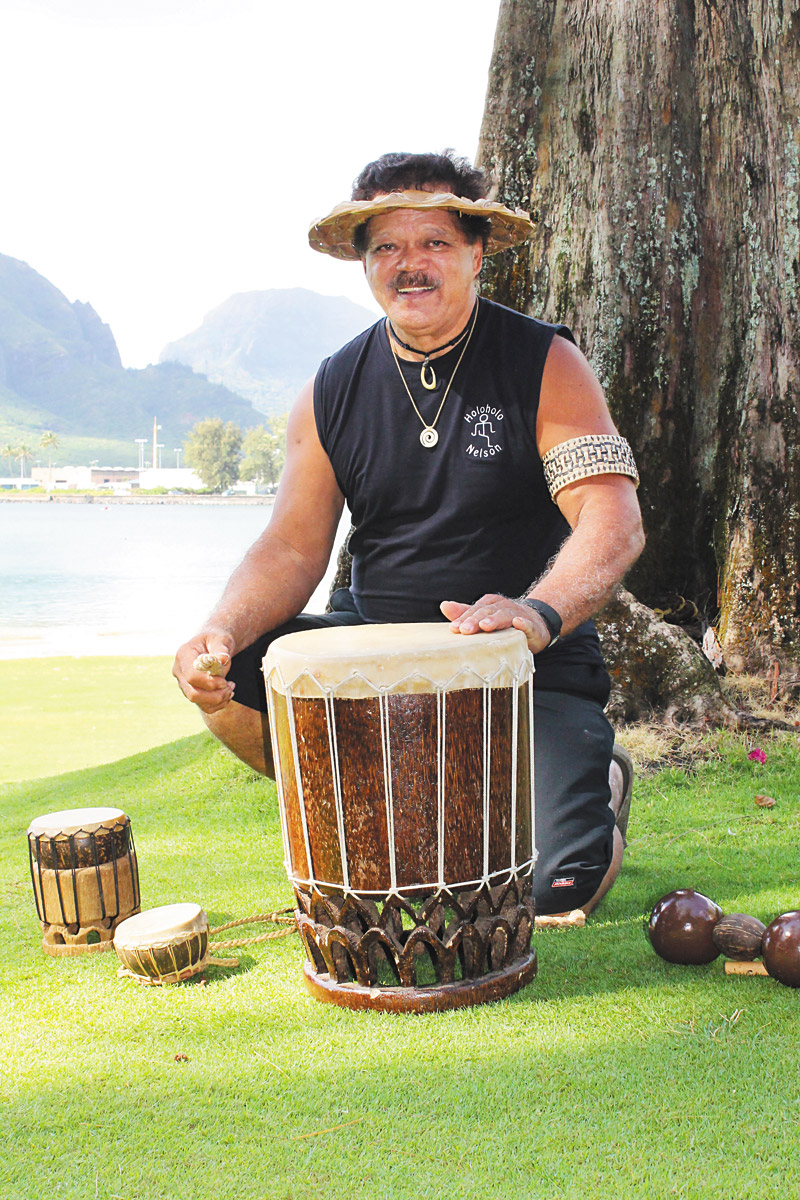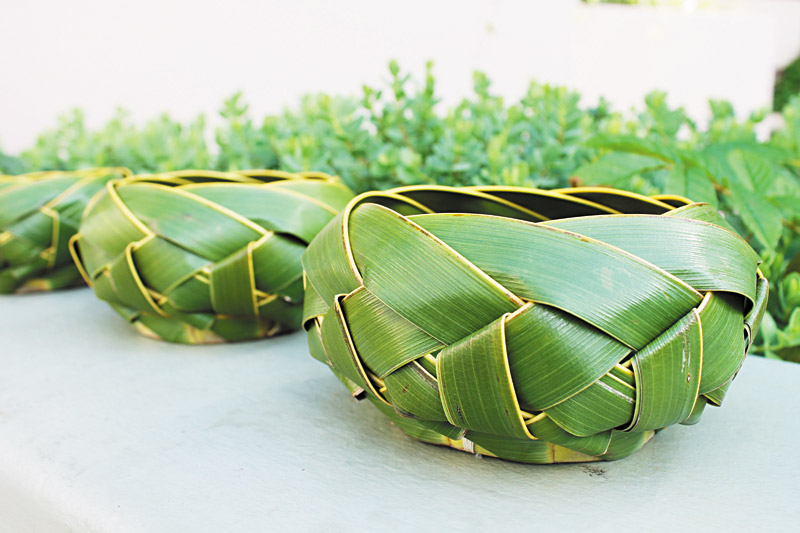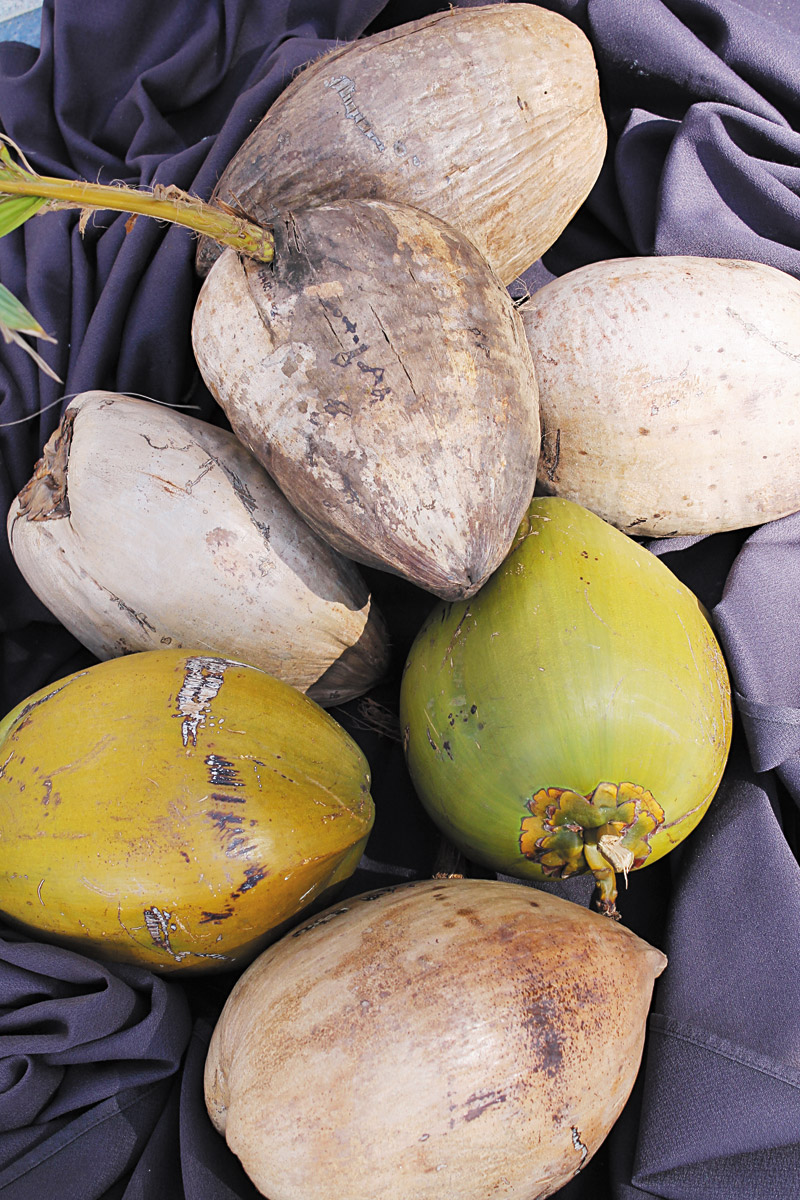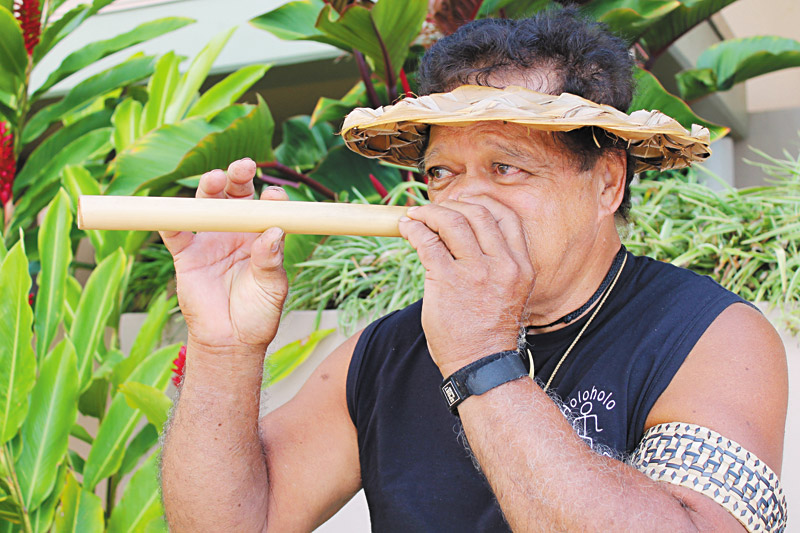Nelson Kaai’s Secret To Happiness
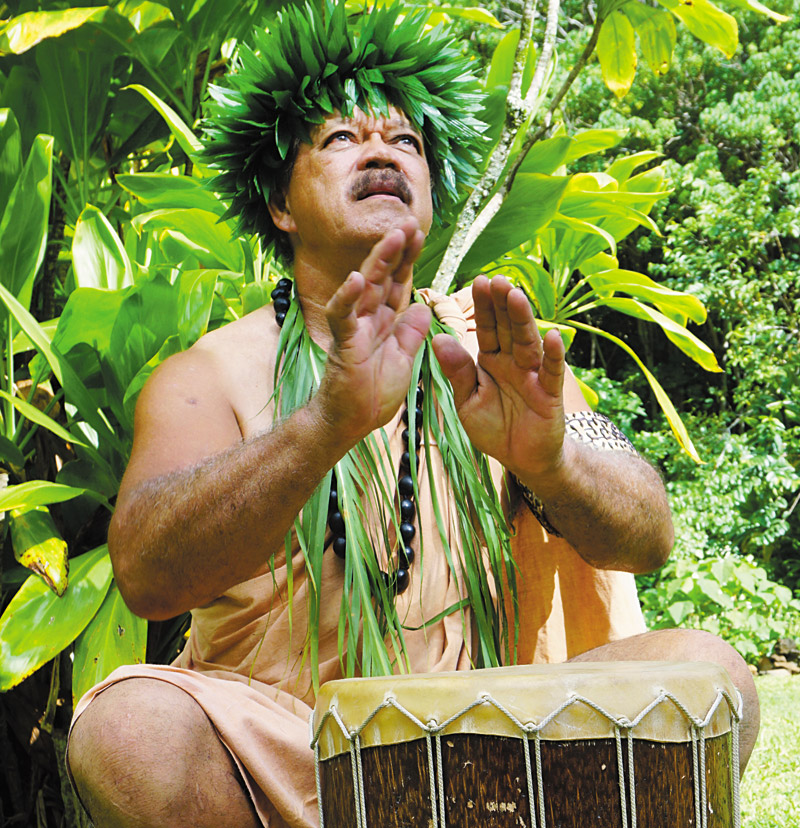
The Hawaiian cultural practitioner credits the coconut tree for his positive outlook on life — that and music | Melissa Mojo photo
Hawaiian cultural practitioner Nelson Kaai credits the coconut tree and its many gifts as central to his positive
Happiness is Nelson Kaai’s antidote to aging. The Hawaiian cultural practitioner is a deceptive 74 years old and credits youthfulness on the “goodness of health” and the “happiness of nature.” Though most people his age already are retired, Kaai is still scaling coconut trees, playing homemade instruments in the moonlight and teaching as many people as possible about his native culture.
“I’m glad to share,” he says one morning at Kauai Marriott Resort, where he offers weekly lectures for visitors.
Each Monday, overlooking Kalapaki Bay, he talks to people from around the world about the “Tree of Life,” or the coconut tree.
“Everything of the coconut gives value to sustain life. I’m only scratching the surface,” he says.
The tree is not only used as medicine by way of its milk, but it also provides material Kaai uses to weave objects for enchanted audience members. He even has crafted drums from the natural resource and brings them along as part of the weekly demonstration.
“I wanted to put life back into that dead tree,” he says, pointing out a large, meticulously made drum.
As he explains all the keepsakes he creates from the coconut tree, he recalls a story about his mother, Annie Wood. When he was a child, he remembers asking her for a dollar. Her reply was, “Son, money don’t grow on trees,” he says with a hearty laugh. “I’ve been making a lot of money from the trees today.”
He’s also been earning money traveling the world sharing his culture, dancing hula, chanting, weaving, playing traditional homemade instruments like the ulili (gourd rattle) and the ohe hano ihu (nose flute), as well as blowing conch shells and conducting ceremonial rites for people in countries including Germany, Poland and Austria.
“He’s a true ambassador of the Hawaiian spirit through its culture,” says Melissa Mojo, who worked with Kaai last year during the dinner-theater production of Ghost of the Sinclair Plantation. “He’s really a joy to be around.”
Born and raised in Hanapepe, Kaai says he is delighted to connect with visitors and kamaaina to help perpetuate the Hawaiian culture “any which way I can,” so that all is not lost. The best part is that people sincerely are interested in learning.
“They don’t want me to stop,” he says.
He credits attending Kamehameha Schools in Honolulu for his ability to speak and perform in front of large crowds. Before that, he admits he was shy and bashful, finding solace fishing and crabbing alone at Hanapepe River.
“The river was my playground,” he says.
Upon graduating from high school, Kaai found his way to Hawaiian Electric, where he worked as a lineman for more than seven years. He says it was the perfect fit for him because “I like climbing trees.” Rather than trees, of course, he climbed electric poles for another some 26 years with Kauai Electric, with which he landed a job after moving back home in 1968.
His admiration for Hawaiiana has never ceased throughout the years, and he continued pursuing his passion as a freelance purveyor of the host culture. He persists mostly as a jack of all musical trades, though he denies the ability to sing.
“I cannot keep the note. I don’t know what tune it is,” he says.
Still, he easily finds harmony whenever he picks up one of his nose flutes and plays.
“Music to me was born through the flute,” he says.
It was the first instrument he was thoroughly enamored with and remembers making one from a piece of bamboo he found while at Waipio Valley on Hawaii island. He demonstrates the beautiful melodies that emanate from the perfectly crafted instrument while sharing a story about its history. “Only men folks were authorized to use flute in ancient Hawaiian times,” he says, adding that it was to help boost the population.
“How’s that?” Kaai asks in his kumu way. “Well, the man would blow the flute with haunting, sweet melodies and the ladies would get attracted to the music.”
Though he plays for audiences, he prefers making music in nature, especially in Kokee. In fact, it’s such a significant part of his culture to commune with the environment that he encourages everyone to remember to do so.
“Learn to appreciate nature. Look at things — the flowers, the sky, the clouds, the wind — and really absorb that within yourself to a point where you appreciate life,” he says.
cocomidweek@gmail.com


